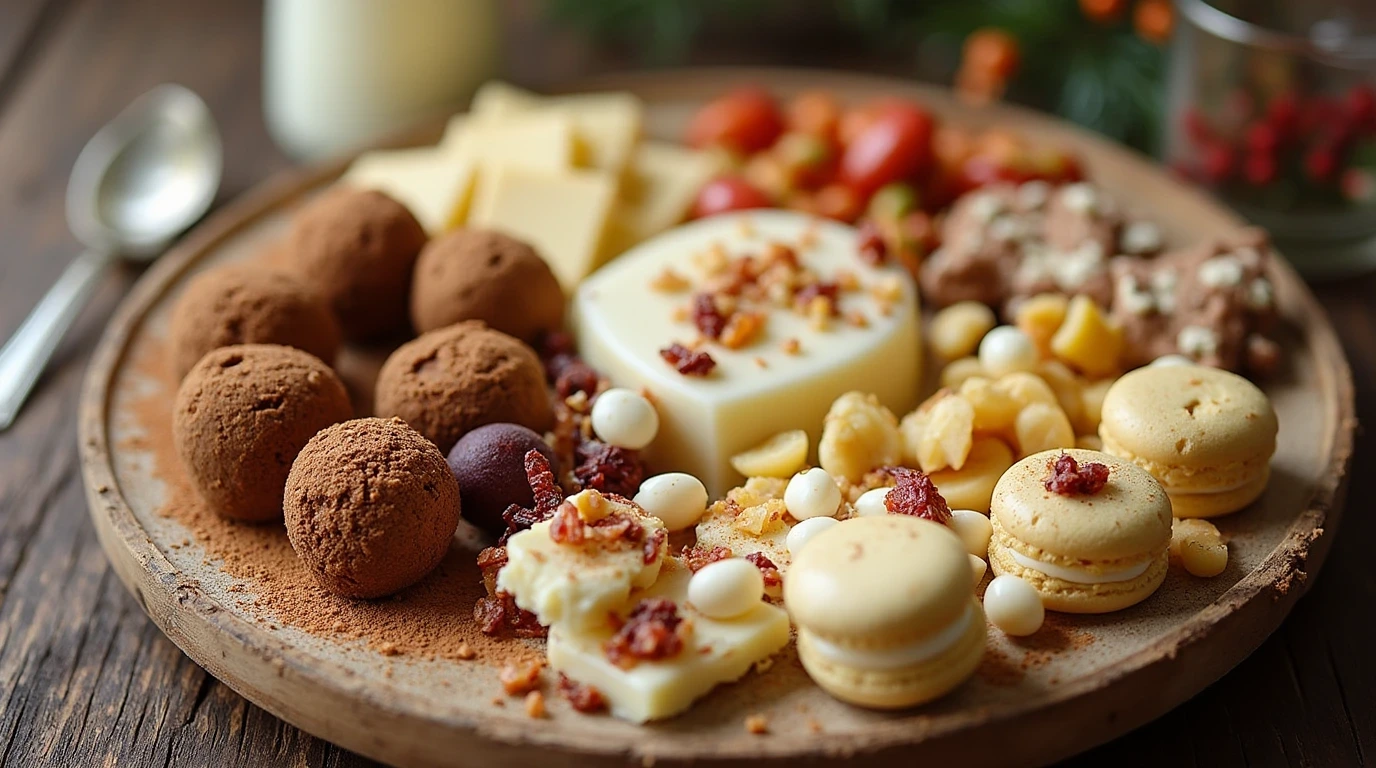What Makes A White Chocolate Different? [Top 5 Facts] 🍫✨
Table of Contents
Table of Contents
Have you ever unwrapped a bar of creamy, ivory-colored white chocolate and wondered why it tastes so distinct from its darker cousins? You’re not alone. Many have questioned whether creamy chocolate qualifies as “real” chocolate—or if it’s just an imposter in the world of sweets. But here’s the truth: white chocolate is more than just a dessert—it’s a canvas for creativity, a source of joy, and a treat with its own unique story.
In this comprehensive guide, we’ll explore what makes creamy chocolate different, uncover five fascinating facts about it, and even share some tips on how to use it in your favorite recipes. So please grab a cup of coffee (or maybe a piece of Ivory chocolate ), and let’s dive in!
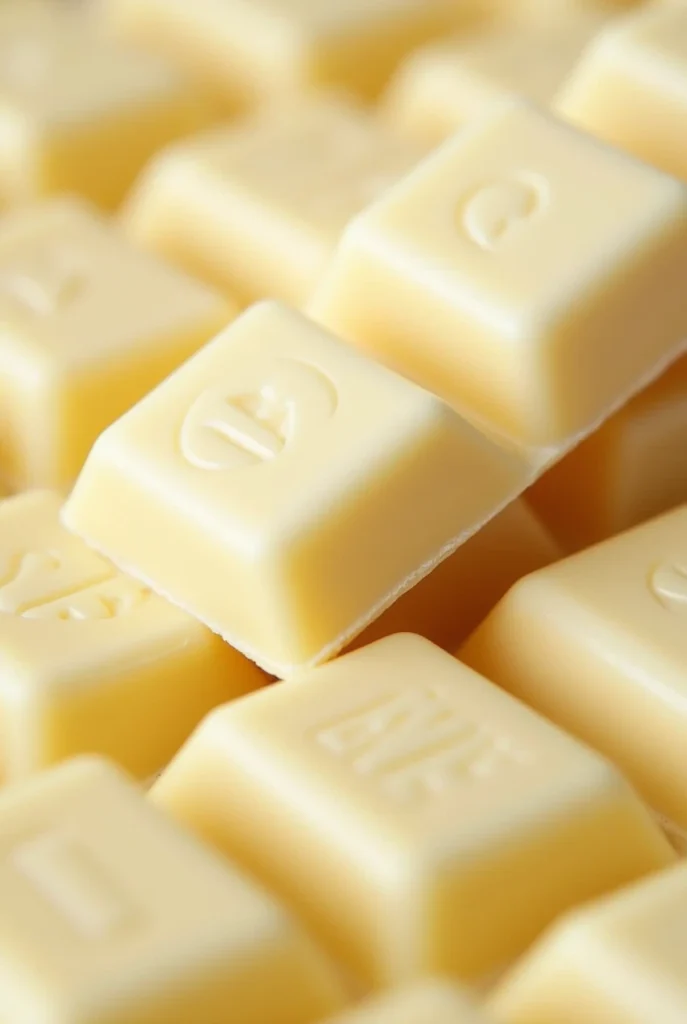
Section 1: The Basics of White Chocolate
Defining White Chocolate
Let’s start by defining white chocolate. It’s made from cocoa butter, sugar, milk solids, and flavorings like vanilla. Unlike dark or milk chocolate, Ivory chocolate does not contain cocoa solids—the part of the cocoa bean that gives traditional chocolate its deep brown color and rich flavor. Instead, creamy chocolate relies solely on cocoa butter, which provides its smooth texture and mild taste.
Key Keywords:
- Cocoa Butter: The star ingredient that defines creamy chocolate.
- Regulations: According to the FDA, creamy chocolate must contain at least 20% cocoa butter, less than 55% sugar, and at least 14% milk solids to qualify as “white chocolate.”
White chocolate is more than just a dessert; it’s a testament to the incredible versatility of cocoa butter.
Section 2: Top 5 Facts About White Chocolate
Now that you understand the fundamentals, let’s delve into the top five facts that make creamy chocolate stand out:
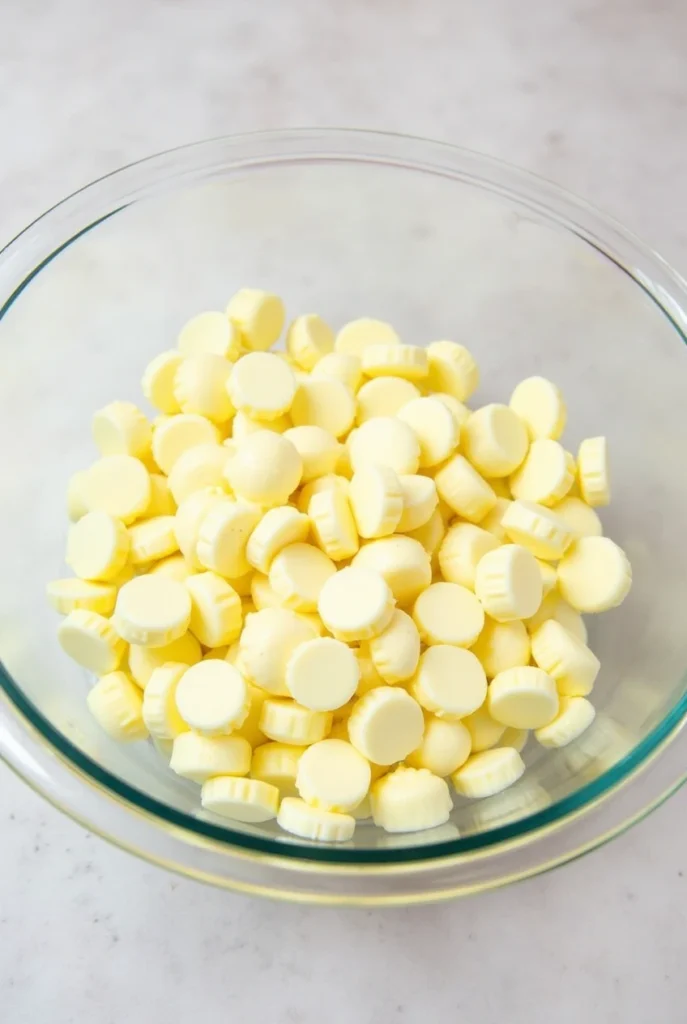
Fact #1: Not Technically “Chocolate”
Here’s a fun fact: Some purists argue that creamy chocolate isn’t technically chocolate because it lacks cocoa solids. While it shares the same origins as dark and milk chocolate (cocoa beans), its absence of cocoa solids means it doesn’t meet the strict definition of chocolate held by many traditionalists. However, its creamy texture and sweet flavor have earned it a loyal following among dessert lovers.
Keyword Variations:
- Ivory Chocolate
- Non-cocoa chocolate
- Creamy chocolate alternative
Fact #2: Unique Flavor Profile
creamy chocolate has a delicate, buttery flavor that sets it apart from other types of chocolate. It’s often described as sweet, creamy, and mildly nutty. These characteristics make it ideal for pairing with fruits, nuts, and spices, creating endless possibilities for delicious combinations.
Fun Fact:
Studies show that creamy chocolate pairs exceptionally well with citrus flavors, such as lemon or orange zest. Try adding a pinch of zest to your next batch of creamy chocolate bark for a refreshing twist!
Keywords:
- Citrus-flavored creamy chocolate
- Nutty creamy chocolate treats
- Sweet-and-tangy creamy chocolate desserts
Fact #3: Rich in Cocoa Butter
As mentioned earlier, cocoa butter is the star ingredient in creamy chocolate. It not only gives it its luxurious texture but also contributes to its health benefits. Yes, you read that right—white chocolate can be good for you! Cocoa butter contains healthy fats that support heart health when consumed in moderation.
Keywords:
- Health benefits of cocoa butter
- Nutritious creamy chocolate options
- Cocoa butter-rich creamy chocolate
Fact #4: Versatile in Baking and Cooking
One of the reasons creamy chocolate is so beloved is its versatility. Whether you’re making cookies, cakes, or sauces, creamy chocolate adds a touch of elegance and sweetness to any dish. Here are a few ideas to spark your creativity:
- Macarons: Use creamy chocolate ganache as a filling for these delicate French pastries.
- Truffles: Roll balls of creamy chocolate mixture in crushed nuts or cocoa powder for a decadent treat.
- Sauces: Melt creamy chocolate with cream to create a luscious sauce perfect for drizzling over ice cream or fruit.
Keywords:
- Baking with creamy chocolate
- Cooking recipes using creamy chocolate
- Versatile creamy chocolate applications
Fact #5: Health Benefits (Surprise!)
While creamy chocolate is often dismissed as less nutritious than dark chocolate, it still offers some surprising health perks. For instance:
- Antioxidants: Although lower in antioxidants compared to dark chocolate, creamy chocolate still contains trace amounts of cocoa butter.
- Calcium: Thanks to its milk content, creamy chocolate provides a small boost of calcium, supporting bone health.
Keywords:
- Healthy creamy chocolate choices
- Nutritional value of creamy chocolate
- Calcium-rich creamy chocolate snacks
Section 3: How Is White Chocolate Made?
Understanding how creamy chocolate is made helps explain its unique qualities. Here’s a step-by-step breakdown of the process:
Step 1: Extracting Cocoa Butter
Cocoa beans are roasted, cracked, and ground into nibs. These nibs are then pressed to extract cocoa butter, leaving behind cocoa solids.
Step 2: Mixing Ingredients
The extracted cocoa butter is blended with sugar, milk solids, and flavorings to form creamy chocolate.
Step 3: Tempering and Cooling
Finally, the mixture is tempered (a process that stabilizes the chocolate) and cooled to achieve its final glossy appearance.
Tip:
If you’re melting creamy chocolate at home, work slowly and carefully to prevent it from seizing. Overheating can ruin its texture, so patience is key!
Keywords:
- Making creamy chocolate at home
- Tempering creamy chocolate techniques
- Cooling creamy chocolate properly
Section 4: Common Misconceptions About White Chocolate
Despite its popularity, creamy chocolate remains shrouded in myths. Let’s clear up a few common misconceptions:
Misconception #1: White Chocolate Is Unhealthy
While creamy chocolate is higher in sugar than dark chocolate, it’s not inherently unhealthy. When consumed in moderation, creamy chocolate can easily fit into a balanced diet.
Misconception #2: Any Chocolate Can Be Substituted for White Chocolate
Not all chocolates are interchangeable. Substituting dark or milk chocolate for creamy chocolate may alter the flavor and texture of your recipe. Be sure to keep the specific needs of your dish in mind.
Keywords:
- Is creamy chocolate bad for you?
- Can I substitute creamy chocolate in recipes?
- Understanding creamy chocolate substitutes
Section 5: Creative Ways to Use White Chocolate
Ready to put your newfound knowledge to use? Here are some creative ways to incorporate creamy chocolate into your cooking:
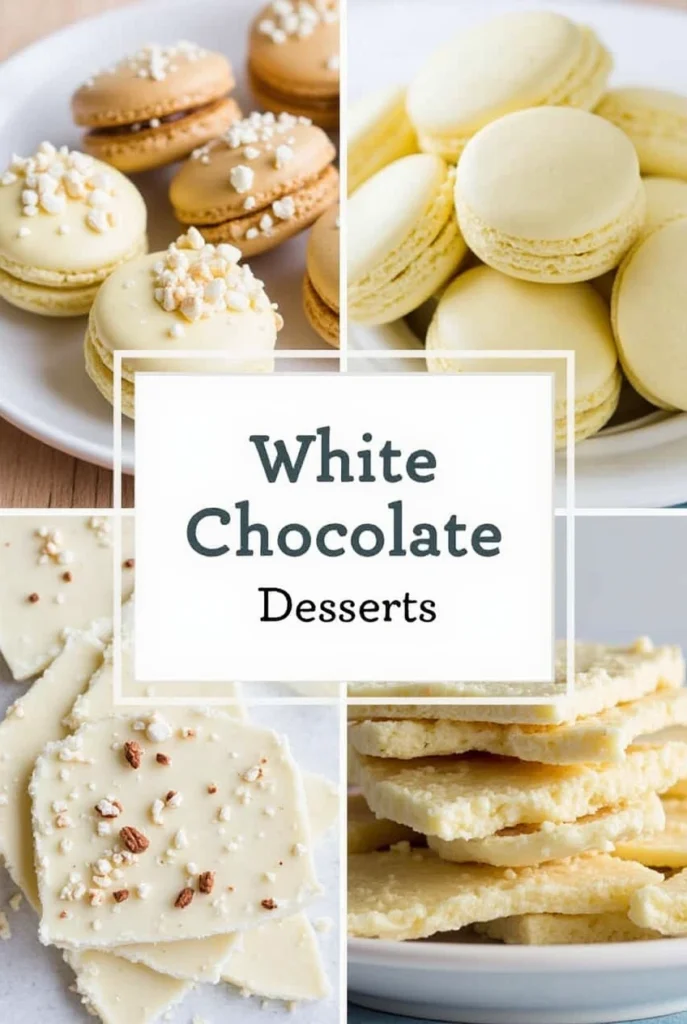
Idea #1: White Chocolate Macadamia Cookies
Combine creamy chocolate chips with crunchy macadamia nuts for a classic cookie recipe that never fails to impress.
Idea #2: White Chocolate Mousse
Whip up a light, airy mousse using melted creamy chocolate, whipped cream, and egg whites. Serve chilled for a sophisticated dessert.
Idea #3: White Hot Chocolate
Indulge in a warm mug of white hot chocolate by melting creamy chocolate into steaming milk. Enhance the flavor with a sprinkle of cinnamon for an extra touch of flair.
Keywords:
- creamy chocolate dessert ideas
- Creative white chocolate recipes
- Delicious creamy chocolate creations
FAQ Section: Answers to Common Questions About White Chocolate (H2)
Q1: Why is white chocolate considered different from other chocolates?
White chocolate differs because it lacks cocoa solids, relying instead on cocoa butter for its signature creaminess. This sets it apart both visually and in terms of flavor.
Q2: Can I use white chocolate interchangeably with dark or milk chocolate?
While possible in certain recipes, creamy chocolate has a distinct texture and sweetness. Adjustments may be needed to maintain balance.
Q3: Is white chocolate healthier than dark chocolate?
Not necessarily. While white chocolate contains beneficial fats from cocoa butter, it lacks the antioxidants found in dark chocolate.
Keywords:
- Why is white chocolate different?
- Using white chocolate in baking
- Health comparison between white and dark chocolate
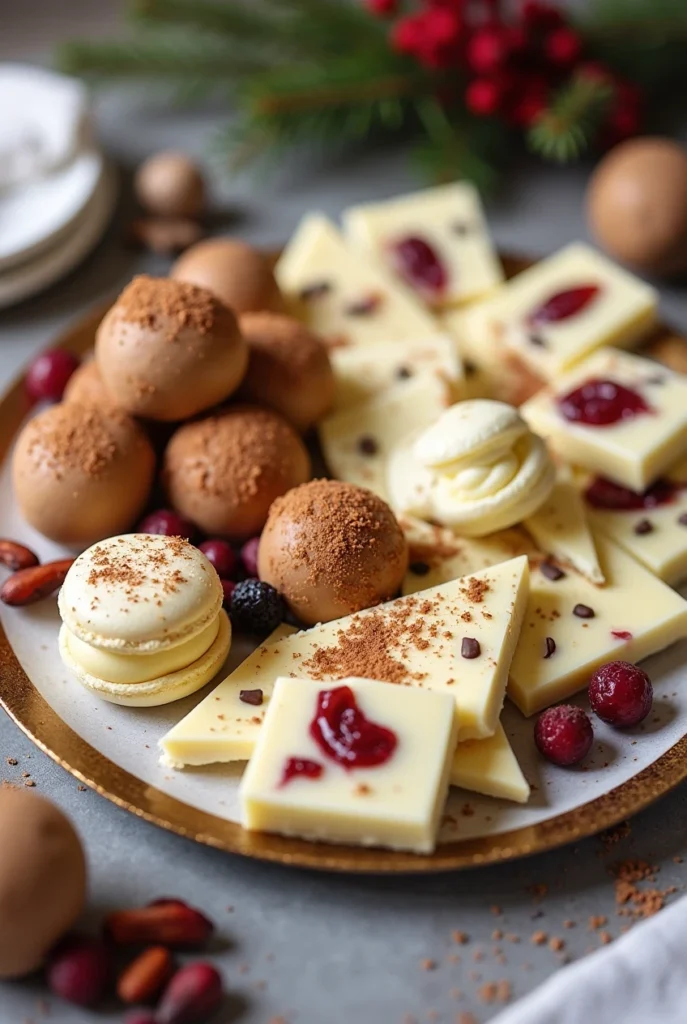
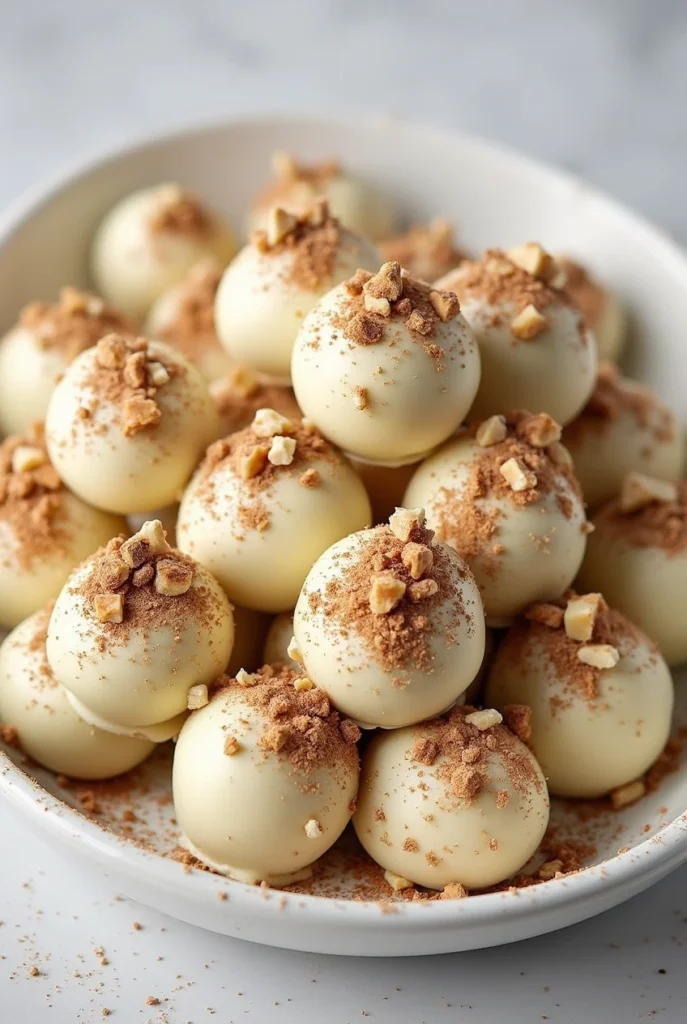
Conclusion: Celebrating the Uniqueness of White Chocolate
White chocolate may spark debate among chocolate enthusiasts, but there’s no denying its charm. From its luxurious texture to its versatility in cooking, it offers endless possibilities for creativity. Whether you’re dipping fruits, crafting desserts, or simply enjoying a square on its own, creamy chocolate brings something special to every occasion.
“Life’s sweeter when you embrace all shades of chocolate—even the ivory ones!”
Call-to-Action:
White chocolate opens up a world of creative possibilities! We’d love to see what you create with this unique ingredient. Share your favorite creamy chocolate recipes or any delicious treats you’ve made in the comments below. And don’t forget to tag us on social media using #WhiteChocolateDelights — we can’t wait to see how you’re incorporating this sweet treat into your kitchen adventures!”
Additionally, if you’re craving more ideas and tips, sign up for our newsletter to get the latest white chocolate-inspired recipes straight to your inbox. Or follow us on social media for daily updates on the best ways to enjoy white chocolate in your baking and cooking!
Git more recipes you might like
- Moose Tracks Ice Cream.
- Cold Brew Coffee.
- Best Chocolate Bar for You.
- Bread and Cheese Pairings.
- Cottage Cheese Cookie Dough.
- Kids’ Birthday Cake Designs.
Did You Try Our Recipe?
There are no reviews yet. Be the first one to write one.

